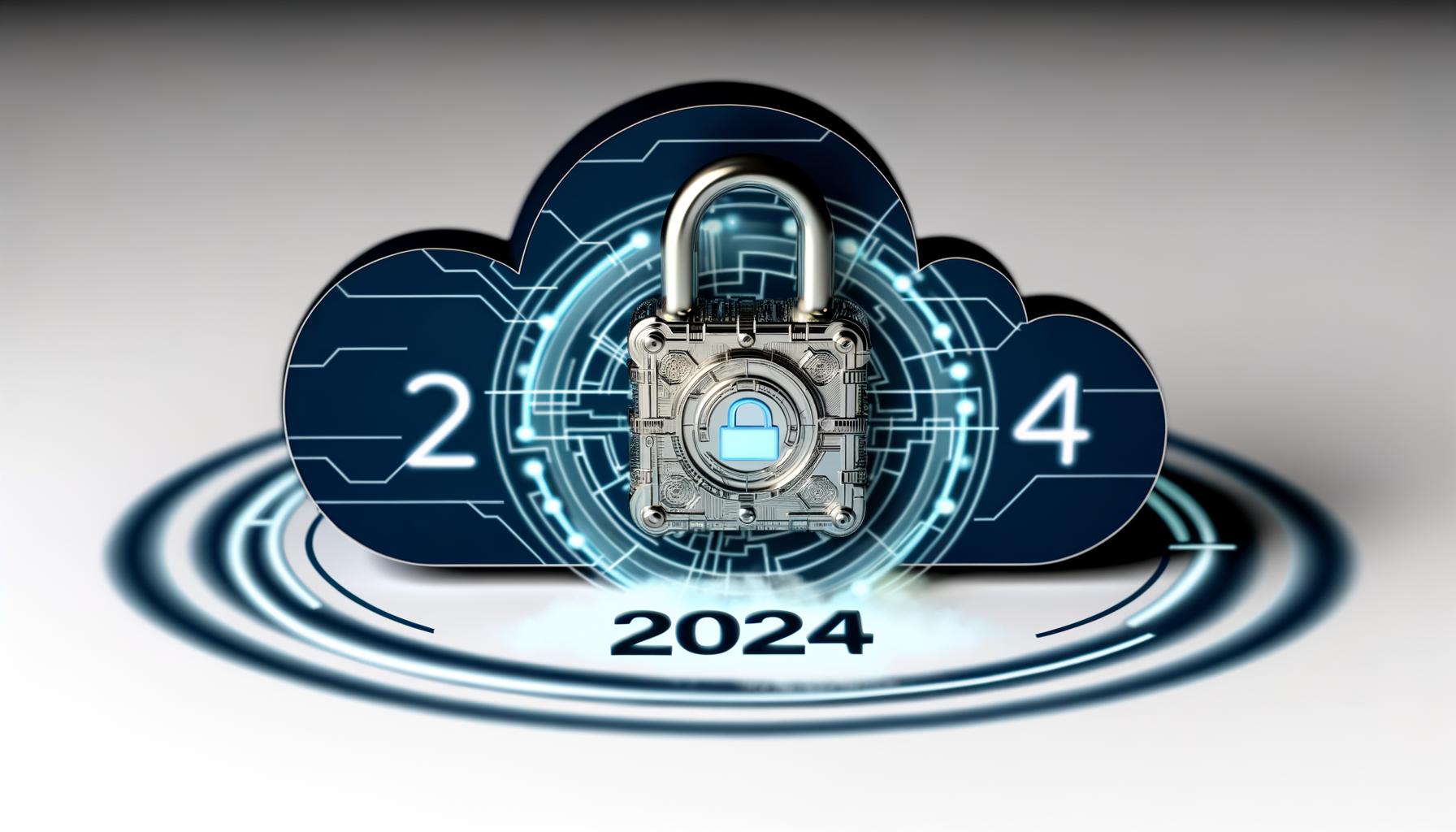Top 4 Strategies to Cut Your IT Management Overhead
Every organization is looking to optimize its IT budget, especially amid global economic instability.

The threat landscape is constantly changing - often moving faster than modern cybersecurity solutions can keep up with.
Organizations are contending with cyber threats on an unparalleled scale, the velocity and sophistication of which are often difficult to identify and defend against. Cyber threats are frequently interconnected, rapidly mutating, and aligned with emerging technology trends - like the unprecedented acceleration of cloud-driven digital transformation initiatives.
Per Gartner, spending on information security and risk management products and services is anticipated to hit $188.3 billion in 2023, with cloud security expected to have the highest growth rate within the next two years and a 26.8% increase this year. Organizations are also expected to increase their focus on critical security services, like consulting, and hardware support and implementation, with spending on track to reach $76.5 billion this year.
As businesses scramble to support urgent digitalization imperatives, such as third-party infrastructure integration and remote work, attack surfaces have broadened, leading to new risks and exposures. Organizations are struggling to manage and secure complex multi-cloud environments amidst the widespread scarcity of cybersecurity talent.
Organizations need to stay ahead of constantly evolving cloud environments and emerging cloud security trends to ensure their approach to cloud security aligns with the ever-changing market.
Social-engineering scams, synthetic identities, insider threats, IoT-based attacks, ransomware, malware, business email compromise (BEC), bots… there’s a distinct uptick in attack vectors across the board.
As cloud migration continues to increase across all industries, cybercriminals have more opportunities and surface areas to infiltrate via a clever range of tools and techniques. For example, a social-engineering scam is often the initial phase of a large-scale cyberattack that bypasses cybersecurity controls on the path to accessing digital accounts, devices, or networks.
Some of the main cloud security threats to be aware of in 2023:
Cloud resource misconfigurations
Misconfigured cloud resources can lead to data exposure and system vulnerabilities, and potential compliance and regulatory violations. Misconfigurations can occur when databases, servers, or storage buckets are left open to unauthorized access, or human error from lack of training, among others. But just 37% of organizations in a recent survey monitor and detect resource misconfigurations in their IaaS infrastructure; and only 37% of advanced IaaS users have visibility into all resources and configurations.
eBPF exploitation
eBPF (extended Berkeley Packet Filter), an extension of the traditional BPF technology, is increasingly used in cloud environments for performance monitoring, security, and network analysis. But cybercriminals can use eBPF to inject malicious code into system events, monitor and intercept sensitive information, or launch attacks against cloud infrastructure. Attackers can modify eBPF programs to bypass security monitoring or to allow malicious traffic to pass through undetected. Because eBPF operates at a low level in the system stack, it can be challenging to detect and mitigate suspicious activity.
Advanced persistent threats (APTs):
APTs are designed to gain unauthorized access to a network or system and remain undetected for extended time periods. Typically these attacks, which include techniques like phishing, social engineering, and advanced malware, involve multiple stages and are executed by highly organized and well-funded criminal networks. APTs are a serious risk to cloud environments because they can be used to steal sensitive data (like intellectual property), compromise systems, and disrupt cloud infrastructure.
Insider threats
Insider threats are particularly concerning in cloud environments because cloud systems often involve multiple users with differing degrees of access to data and resources; any one of them could intentionally or accidentally expose sensitive data or compromise system security. For example, employees can misuse their privileges or an attacker can use social engineering tactics to compromise an identity and then move laterally between workloads. Or an employee might inadvertently overlook corporate security policies and leave an opening for external attacks.
Cloud security is an ever-changing landscape, requiring companies to stay alert and adopt a proactive stance to safeguard their assets in the cloud. Given the constant emergence of new threats and challenges, it is crucial to stay up-to-date on the latest trends and best practices. This helps guarantee the security, compliance, and resilience of cloud environments when confronted with complex cyber threats.
Without further ado, below are the foremost 2023 cloud security trends to prioritize:
Zero Trust security model
Momentum surrounding Zero Trust isn’t slowing down anytime soon; by 2025, at least 70% of new remote access deployments will be facilitated via Zero Trust Network Access (ZTNA) rather than VPN services. This “trust only after verification” approach to cybersecurity is gaining popularity as organizations seek to better safeguard their remote workforce and overcome the limitations of parameter-based network security.
A Zero Trust security model allows organizations to deploy a flexible, comprehensive framework to protect against diverse threats while simultaneously delivering a better user experience.
Identity and access management (IAM)
IAM addresses the challenges associated with securing access to cloud resources and data in cloud environments that are increasingly distributed across multiple locations and involve multiple cloud service providers and third-party vendors.
IAM provides control over access to cloud resources; can automate the process of bestowing and revoking access based on user roles and other policies; can help prevent unauthorized access via multi-factor authentication (MFA); and offers user lifecycle management to ensure appropriate access to cloud resources is always available. Solutions like Microsoft Entra, for example, provide cohesive tools and features that enable organizations to make real-time identity access decisions throughout any cloud environment.
Secure Access Service Edge (SASE)
SASE is a cloud-based security model that continues to gain significant attention as organizations ramp up remote work initiatives and accelerate application and data migration to the cloud. It provides a decentralized security structure that incorporates a bigger volume of devices, applications, users, and data that are increasingly moving beyond enterprise perimeters.
SASE consolidates a range of security functions, including secure web gateway (SWG), cloud access security broker (CASB), zero-trust network access (ZTNA), and firewall as a service (FWaaS), into an integrated security solution. This allows for more efficient and effective security controls, and the scalability to adapt to changing business requirements. SASE is also simpler to scale than a VPN gateway, so it helps accelerate secure cloud adoption.
Endpoint management
Advanced endpoint management is quickly becoming synonymous with the mainstream transition to the cloud and the distribution of the workforce. Laptops, smartphones, and tablets are often the weakest link in an organization's security posture, but are regularly used to access cloud services. Endpoint protection reduces the risk of a successful cyber attack, enabling organizations to detect and respond to security incidents in real-time while ensuring compliance.
Solutions like Microsoft Intune, for example, streamline endpoint management throughout numerous cloud, on-premise, operating systems, virtualized, and mobile endpoints. Or Windows Autopilot allows organizations to quickly and easily set up and configure new Windows devices without the usual IT oversight.
Cloud Access Security Brokers (CASB)
CASBs reside between an organization’s on-premises infrastructure and the cloud services they use, enabling a centralized way to monitor, control and secure access to cloud resources. It provides visibility into cloud usage for fast identification of security risks and compliance issues; supports enforcement of policies like role-based access control; protects sensitive data against unauthorized access via encrypted data in transit and at rest; and enables real-time threat detection and response.
Globally, the market for CASBs is anticipated to reach $28.4 billion by 2030 as organizations emphasize investments in the tools to strengthen cloud security without decelerating modernization advancement.
As your modernization programs progress, ensure that your organization commits to a future-ready, adaptive approach towards cloud security. CloudServus is a top tier Microsoft consultancy with the experience and specialized skills to help you plan, develop, implement, and deploy a comprehensive and customized security strategy. We can tailor a cloud security program that addresses potential threats throughout your entire cloud environment and significantly improves your security position.
From a cloud security assessment and endpoint management to zero trust, our experts can ensure your organization has cutting-edge, of-the-moment protection against real-world cyber threats.
Don’t hesitate to connect with us to update or completely reimagine your cloud security model, and start establishing a more aggressive stance against evolving cyber risks.

Every organization is looking to optimize its IT budget, especially amid global economic instability.
As cloud technologies become increasingly integral to business operations, the need for robust security in this domain has never been more pressing....

Explore the significance of cloud security assessments in safeguarding data and maintaining privacy in 2024. The Importance of Data Protection in 2024